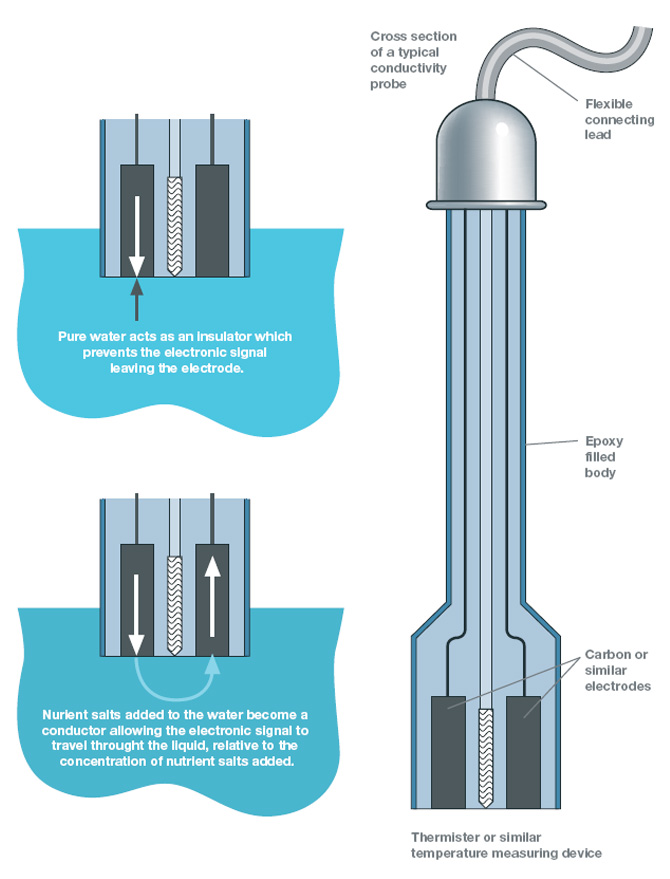
 |
|
Hydroponics - Indoor HorticultureHydroponics - Indoor Horticulture represents an educational, in-depth,
up-to-date,
indoor horticultural growers guide that covers all principles of indoor Hydroponics - Indoor Horticulture examines, explores, dissects and
presents a fully comprehensive step by step growers guide, relating
to all and every aspect of indoor hydroponic horticulture, with complete
chapters on plant biology, propagation, hydroponic systems, nutrients,
oxygen, carbon dioxide enrichment, pH, biological pest control, fungi/disease,
cuttings/clones, pruning/training, breeding, harvesting, equipment,
grow rooms, a full history of hydroponics, and more. |
(Below follows a one page sample taken from the
book)SeedsThere are a number of options available when germinating seeds. We will focus on each technique one at a time. Pre-soakingThe traditional pre-soaking method is a very simple way of getting your seeds to sprout. Simply get two sheets of very damp or almost wet kitchen roll paper towels. Wet them using normal tap water or bottled mineral water. Place your seeds between these two sheets of kitchen paper towels, then place these towels between two saucers or small plates, making sure you get a tight join so you do not lose any humidity inside the area between the two saucers or plates. Check daily, never letting the kitchen roll paper towels dry out. After 1-4 days, the seeds would have sprouted a taproot and this pre-sprouted seed can then be planted into a growing medium. This method is good for those stubborn seeds that will not pop using other methods, which we will expand on shortly. The only drawback with this method is the seedlings can suffer massive transplant shock and even possible damage to the taproot when removing from the kitchen roll paper towel, and then planting into the new medium. It is very easy to damage the seedling when actually picking up the seed with fingers or |
tweezers. However, when a seed won’t pop using the other methods mentioned below, then this is your best and last resort. Even the most competent growers have found, using rockwool as an example, that for all their experience and previous success, that somehow this time, the seeds won’t pop in the rockwool substrate. So these growers then resorted to the method mentioned above and within 24 - 48 hours all the seeds had finally popped ready for transplanting back into the rockwool for further propagation. RockwoolModern rockwool methods are regarded as the most professional way of germinating seeds. This method is becoming more and more the norm used by nearly all hydroponicists. It involves using presoaked rockwool substrate; this is not normal rockwool but a specific one developed directly for horticulture. The most popular brand of horticultural rockwool is Grodan. The process is simple but ideally requires using specialised hydroponic electronic equipment. A digital CF meter and a digital pH meter is advised, available from all good grow shops. Briefly, the CF meter measures the conductivity factor of dissolved salts in the water. In English, this gadget measures how strong or how weak your nutrient mix is, giving you a yardstick to understand if you are possibly over or under feeding the plants. The pH meter is self-explanatory; it simply measures the current pH level of your water or nutrient mix. This again is invaluable, as this will give you another yardstick in understanding and maintaining the right pH level for your plants. |
| Example of how a CF Meter Works |

|
 |